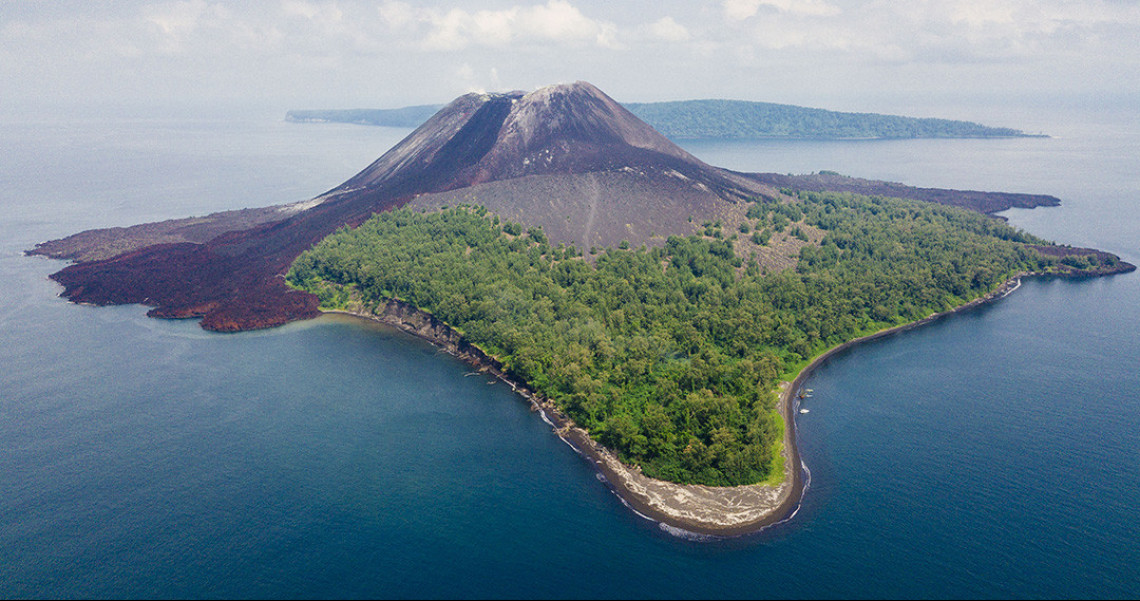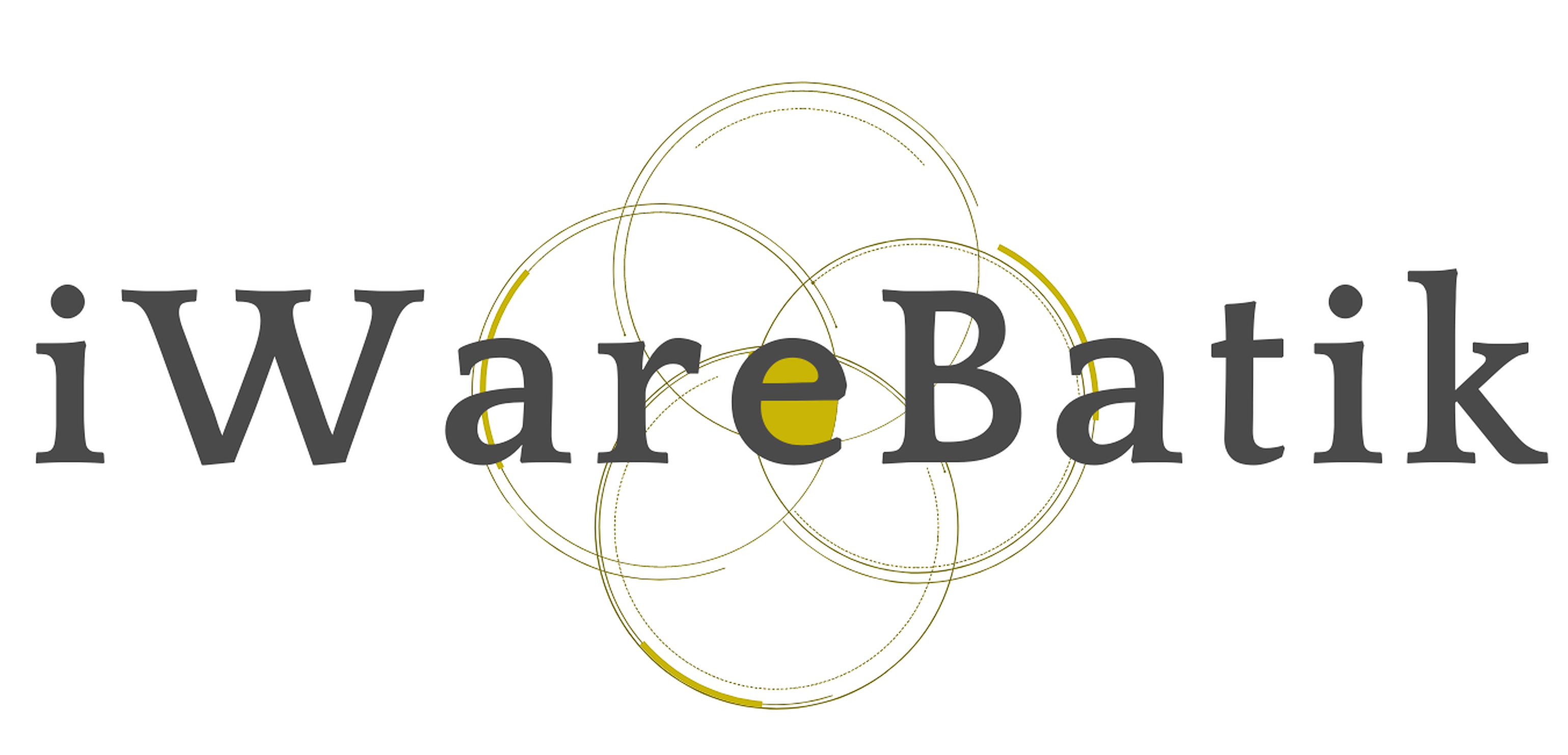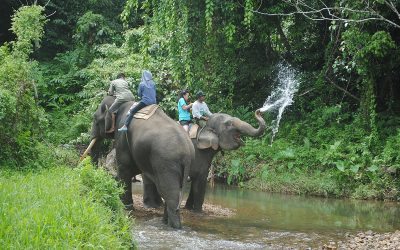Home / Batik Regions – Western Indonesia – Southern Sumatra – Lampung / Krakatau Volcano
Nature Destination
Experience the Tropical Nature!
Krakatau Volcano

The Krakatau Mountain (photo: Pesona.Travel)
Krakatau Volcano
Krakatau remains one of the world’s most well-known volcanoes due to its notorious 19th-century eruption. Located between Java and Sumatra Islands, it is a natural reserve area that is worth visiting for adventure, education, and research purposes. Visit www.volcanodiscovery.com for up to date seismic activity information before booking your trip.
Tourist Attractions in Lampung
Bukit Barisan Selatan National Park
The World Wildlife Fund has ranked it as one of the planet’s most outstanding habitats for
Lampung
Batik Motifs
Mahkota Siger
Siger is the crown of a noblewoman in ancient time. It is a symbol of femininity, strength, and
Gajah Way Kambas
The motif illustrates the Lampung’s natural reserve, the Way Kambas. it also symbolizes
Pohon Hayat (Tree of Life)
The Batik motifs in Lampung are dominated by the acculturation of Buddhist and
Gamolan
This motif illustrates Gamolan, a bamboo musical instrument of Lampung that is
Discover
Indonesian
Batik
Motifs
Tifa Totobuang
The batik motifs illustrate Maluku’s traditional music instrument called
Jupri Kembang Teh
Kembang Teh illustrates the tendrils of tea plants that grow in the highlands of
Rangkiang
The word “Rangkiang” refers to the rice granary in the Minangkabau language. It symbolizes
Wirasat
Wirasat or divine inspiration is a gift from God. This inspiration is symbolized by
Raja Ampat
Raja Ampat motif represents the marine life at Raja Ampat archipelago in
Malinau Cultural Festival
You will witness a unique competition that might not be found other than in
Daun Sirih
This motif illustrates betel leaves that are used by Lombok communities as traditional
Wakatobi
It symbolizes the coastal beauty of the Wakatobi island and the symbol of Patra symbolizes
Gedhog Kembang Waluh
a combination of Javanese cultural motif of the Majapahit kingdom (XII-XIV century) with
Sandeq
Sandeq Boat is a symbol of the maritime importance of the West Sulawesi region. The greatness of
Mahkota Siger
Siger is the crown of a noblewoman in ancient time. It is a symbol of femininity, strength, and
Pati-Pati Pinehiku
It symbolizes the hierarchy in society and the social status of the Mekongga
Kuda Kupang
Horses symbolize wealth. It contains noble values of virtuous characters that bring
Pala Salawaku
This motif illustrates the unique weapons of the Maluku region, namely
Enggang Dayak
Local people beliefs that hornbills are an incarnation of the Commander of the Birds. It has supernatural
Bale Lumbu
This motif signifies the welfare of the ancient Sasak society. Bale also symbolizes the
Tangerang Herang
Tangerang Herang motif is a symbol of Tangerang city. The Tangerang Herang batik motif consists of
Karawo Mahkuta
Mahkuta refers to Gorontalo’s traditional crown. It represents noble characters of
Taiganja
Taiganja is a precious gold pendant that shows the social status of the Kaili family. It is
Merak Ngeram
The hatching peacock motif has a very deep meaning which refers to the sacrifice and
Burung Bidadari
Bidadari birds are endemic birds in Halmahera. This motif represents an
Awan Berarak
Awan Berarak is a combination of Dayak motifs and Malay patterns. The word ‘Awan Berarak’ means the
Insang Ikan
Insang refers to the gills of the fish. This is a typical pattern of Malay ethnic who inhabits
Daun Simpor
This motif is inspired by the Simpor plant (Dillenia Suffruticosa) which is a typical
Tikar Natuna
The Tikar Natuna motif is adapted from the traditional making of pandanus mats in
Kaharingan
The Kaharingan or ‘tree of life’ based on the Dayak tribes’ belief system. This tree symbolizes
Prada Papua
The word “Prada” in the Javanese-Indonesian dialect means a batik textile that
Gorga Simeol-Meol
The Gorga Simeol-meol is a pattern of plant tendrils. it is regarded as a symbol of longevity and
Dayak Kamang
Kamang motif is generally found in the Dayak tribe shield because it is believed to
Teguh Bersatu
This batik motif shows the strength of the people of Kupang. It also represents a sense of
Keluak Daun Pakis
The word “Keluak” is a Minang language which means twisted or tangled. The Motif of
Tampuk Manggis Sasirangan
The motif illustrates the philosophy of the mangosteen fruit, which is
Kain Cual
Cual textile tradition has existed since the 17th century. The word “Cual” refers to
Lok Baintan Floating Market
As you can imagine, the most authentic thing is that you can buy things and even
Sekomandi
Its philosophical meaning is the eternal union which refers to a saying “until death do us part”
Singayaksa
The Singayaksa motif comes from the name of a place where Sultan Hasanuddin used to
Gurdo Solo
Gurdo or garuda bird is the mount of the Indian god Vishnu. As the Sun Bird,
Buketan Bali
The Balinese bouquet (Buketan Bali) is a floral arrangement and the name is
Besurek Rafflesia
The term “Basurek” refers to a textile that contains letters or inscriptions
Gajah Way Kambas
The motif illustrates the Lampung’s natural reserve, the Way Kambas. it also symbolizes
La Galigo
La Galigo is a literary work of the Buginese Epic that has 300 thousand epic lines. It is considered even
Ukir Sentani
The Ukir motif is a batik motif that is inspired by various traditional Sentani wood carvings
Sekar Jati
Sekar means flower and Jati refers to teak trees that symbolizes a strong mental character that
Kasih Tak Sampai
‘Kasih Tak Sampai’ is an idiom in the Indonesian language which refers to
Parang Seling
Parang Seling or “alternating daggers” is a royal batik motif. It is a feminine variant of
Tengkawang Ampiek
With its many advantages, the Dayaks use this leaf in ritual ceremonies. This plant is a symbol of
Gumin Tambun
Based on Hindu mythology, this motif symbolizes lucks, abundant wealth, and
Biji Kopi
The coffee seeds motif illustrates the pride of local coffee specialities in
Salakanagara
Salakanagara batik motif illustrates the first kingdom in the Betawi land
Angsa Duo
According to legend, the Angso duo batik motif is a pair of swans that are believed to have led Princess
Durian Pecah
Broken Durian motifs depict the foundation of faith. The second half signifies the mastery of
Daun Lada Hitam
The black pepper motif represents the main commodity of Bangka Belitung
Paqbarre Allo
The word “Barre” means round and “Allo” means the sunlight. This motif is interpreted as
Karawo Pinang
Pinang refers to the Palm areca tree. This motif is considered as the original
Kaganga Tanah Rejang
If Batik Besurek combines Arabic calligraphy motifs, then the Kaganga batik takes
Besurek Rembulan
This batik illustrates praise for God who created the wonderful universe
Srimanganti
The name of the Srimanganti motif is derived from Palace’s hallway that connects to
Gonggong Siput
Gonggong (Strombus Turturella) is one type of sea snail found around
Gamolan
This motif illustrates Gamolan, a bamboo musical instrument of Lampung that is
Parang Rusak
Another meaning behind this motif is an unconquerable spirit, symbolized by
Dayak Taghol
Dayak Taghol has a distinctive style of four curved lines and small dots. This motif represents
Tongkonan
Toraja’s traditional house is called Tongkonan. Tongkonan is a place for
Lontara
The Lontara script itself is a typical ancient script of Bugis and Makassar communities. History records that
Jumputan Bintang
The word Jumputan means the tie-dye technique, while the word “Bintang” refers to
Kerawang Tegak Aceh
The Vertical Upright (Kerawang Tegak) Motif symbolizes a person who has a strong
Tenun Bima
The motifs are adopted from Bima woven textile. This pattern has received a great
Gentala Arasy
Built as high as 80 meters, the tower also highlights the historical side of
Leuit Sijimat
This motif reflects the daily activities of the Baduy tribe in Banten. The main ornaments of batik motif consist of:
Pattimura
Pattimura is the name of an Indonesian hero who fought against colonialism in
Ake Patra
Ake is related to the divinity and the composition of the universe. It is a symbol of
Hiu Taliyasan
Indonesia is also home to the world’s largest fish, the whale shark (Rhincodon typus). Hiu Taliyasan refers to
Gonggong Beruntun
This motif illustrates that a person should maintain a positive attitude and
Bekantan Pakis
This motif represents Pakis Haji (Polystichum setiferum), an endemic plant in
Sido Mulyo
Sidomulyo is one of the classical motifs, which is specifically used for the bride’s costume in

